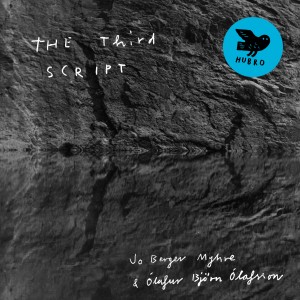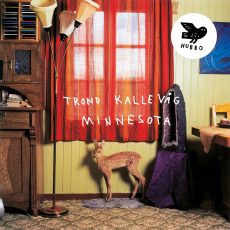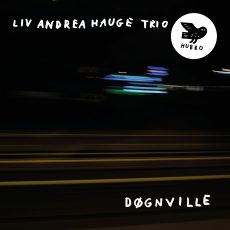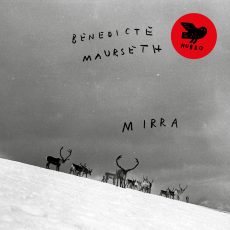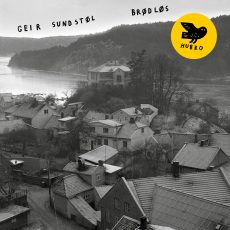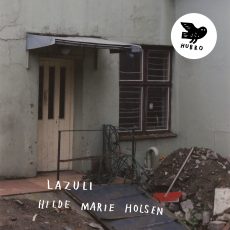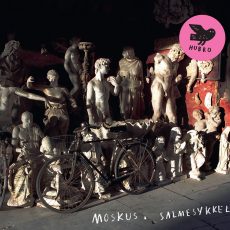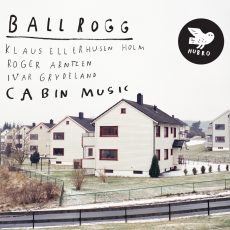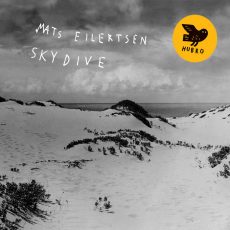Norway meets Iceland in wildly inventive ambient-gothic improvisations recorded in an abandoned Reykjavik warehouse Jo Berger Myhre and Ólafur Björn Ólafsson have created a strikingly original sound-world that, while it may have its antecedents, doesn’t really remind you of anyone else.
The studio
"My studio is at the outskirts of Reykjavik in an abandoned factory warehouse, by the dumpsters where they recycle”, says Ólafsson who as well as working on his own projects for concert music, theatre and film has toured with Sigur Ros, Jonsi and recorded with Jóhann Jóhannsson. “I sometimes go out and gather stuff that has been thrown away and use it for percussion instruments. The studio is by the sea, and it has a very lively room with lots of instruments and weird old gadgets plus some obsolete tape machines. I think we perhaps drew inspiration from these surroundings during our sessions for ’The Third Script’ in the spring of 2016. At one point during our lunchbreak we went for a walk down by the sea. We saw a flock of ravens sort of flying in circles around us, as they tend to come here a lot. So that´s where the title ‘Ravening’ comes from.”
Carefully crafted sounds and moods
’The Third Script’ also appears to progress organically from one mood or musical event to another, as if part of some natural process suggesting the flow of water or play of tides (and, from there, perhaps, to the context of ambient music identified by David Toop in his book ‘Ocean of Sound’).
"With the exception of the track ‘1000%’ which is composed, it´s an improvised album with a few overdubs”, says Jo Berger Myhre, who has worked with Splashgirl, Nils Petter Molvaer and Susanna, among others on the Norwegian improv/jazz scene . "We spent a lot of time working on the sound of it, trying to achieve a detailed graininess, if that makes any sense.” Although the four pieces over two sides that go to make up the album are varied and far from monotonous, the music is typically so sparsely populated, and its sense of space and scale so immense, that it’s as if one is being deliberately invited to fill in the gaps to provide both detail and motive. There’s a rough, fingerprinted patina to the sounds themselves: the scrape of a stick across the concentric metal-rings of a cymbal, or the hairs of a bow across the coiled-wire strings of the bass, which once sampled can make a drone that might go on forever.
"Our collaboration on the album was super spontaneous”, Olafsson continues.”We did a track a day from scratch and tried to be as open as possible to all ideas. The main thing was to come up with a nice set-up in the room that we felt good playing in.”
About the album
Just as we are seemingly invited to register associations with a sense of place or the natural world, we can also make historical connections that begin to situate the music within a particular tradition, as when a specific keyboard voicing might suggest, say, the early ambient recordings of Brian Eno. The timbre of the Farfisa organ can bring to mind the minimalist experiments of Terry Riley, or Indian-sounding ‘I Am the Walrus’-strings the milieu around Pandit Pran Nath, LaMonte Young and their disciples in the downtown New York City boho scene of the 1960s. From Terry Riley we can move to John Cale and from Cale to the Velvet Underground and Nico, and from there to, well, everyone… But whatever its influences and whatever the associations a listener might bring to it, ‘The Third Script’ is very much its own text.
The sheer sound of the album is a work of art in itself, too. Mastered by Deathprod (Helge Sten), at Audio Virus lab in Oslo, with everything written, performed, recorded and produced by the two principals, with Ólafsson also responsible for the album’s final mix, it’s a record that demands to be heard, preferably on vinyl in the old style: Side A followed by Side B.










